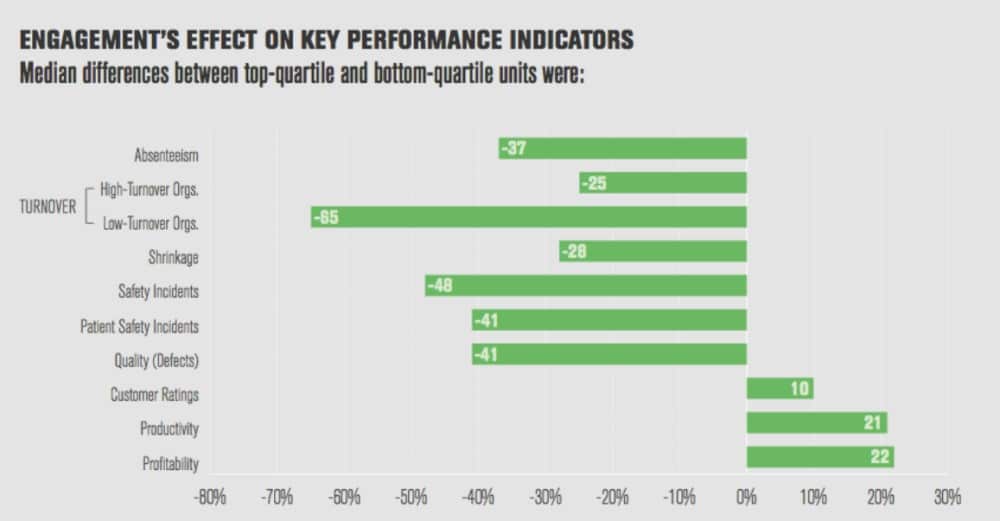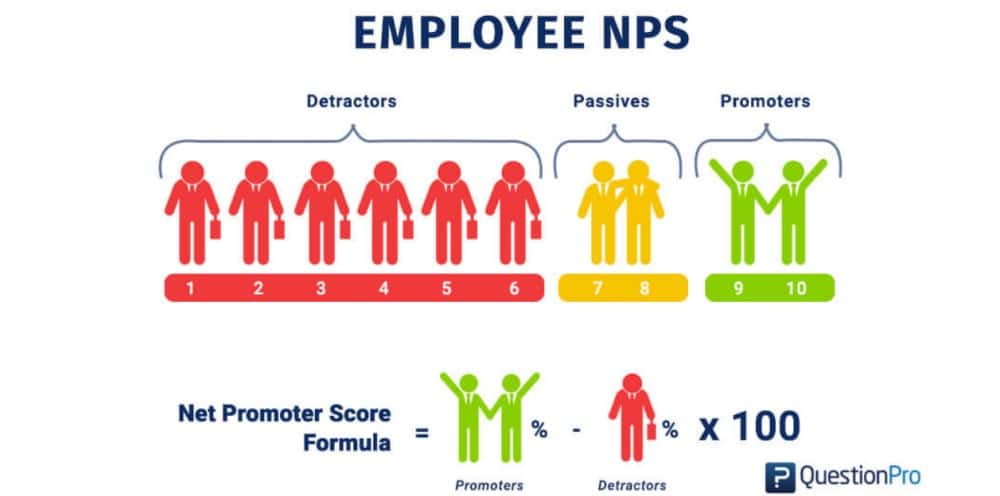In the previous post of this contact centre series, we tackled the issue of staff retention. Staff turnover is often high in contact centres. We looked at some of the tactics operators use to combat that.
One of the vital aspects of staff retention is the idea of promoting company culture. The benefit of that as a tactic is that it helps better engage agents and employees in the contact centre. That leads us nicely onto the topics of employee satisfaction and team building.
Contact centre managers must get the most out of their staff. Providing the right equipment and training are aspects of that process. Tracking and improving employee satisfaction are other vital elements. We’re going to look at why assessing agent satisfaction is so crucial. We’ll also examine how contact centres do it. Finally, we’ll discuss what those centres do to boost satisfaction if they find it to be lacking.
Importance of Tracking Employee Satisfaction
Having content and engaged employees with superior morale isn’t a luxury for firms. Studies have repeatedly shown that engaged employees are more productive than their disengaged counterparts. According to Gallup, the uptick in productivity can be as much as 17%.
The difference between a happy and an unsatisfied contact centre agent can be even more marked. Their working environment is often stressful and demanding. The best agents are those who can cope, and go the extra mile for customers, even under that pressure. Unengaged advisors with low morale won’t deliver in that way.

Source: Get Lighthouse
Maintaining employee satisfaction goes hand in hand with boosting staff retention. Employees who are happy are less likely to change jobs. That’s especially important for the contact centre niche. As an industry, it suffers from high staff turnover. Workers often see contact centre jobs as a stopgap while they find something else.
The benefit of tracking agent satisfaction for a contact centre, then, is twofold. It will help them retain the staff they need to serve customers. Beyond that, it will also ensure they get a better standard of work from those employees. It’s no surprise that contact centres take employee satisfaction seriously. Let’s take a look at some of the ways businesses in the niche assess agent satisfaction.
How do Contact Centres Assess Employee Satisfaction?
Contact centre operators have plenty to keep track of. A large part of their operation involves collecting and analysing data. Such analytics drives workforce management (WFM). It’s also central to other vital aspects of a centre’s day-to-day tasks. Furthermore, it can play a part in tracking agent satisfaction.
Many centres use a blend of data analytics and qualitative assessment of satisfaction. These are three of the most common methods for tracking happiness and engagement:
- Issuing & analysing employee surveys
- Developing net promoter scores (NPS)
- Making engagement a dedicated business function
Periodic Surveys
Surveying employees is the most common method of tracking agent satisfaction. Many contact centres give regular surveys to staff to complete and return anonymously. It depends on the business as to how often the questionnaires get circulated. They may go out every month, quarter, or year.
The idea of the surveys isn’t for individual agents to report dissatisfaction. That wouldn’t work, given that the reviews are anonymous. Instead, what they do is give an overall impression of morale and engagement. The surveys show operators where the average level of satisfaction is amongst workers.
Surveys, too, help highlight the issues or problems shared by many employees. That points managers to the steps they can take to boost satisfaction across the board. Repeated surveying at regular intervals also helps to identify patterns and trends. Thus, you can track the success of measures you introduce to help with morale and engagement.
Both Cymphony and FM Outsource’s teams use surveys to track agent satisfaction. David Rolfe at Cymphony told us that the company was rolling out satisfaction surveys to all staff. FM Outsource also highlighted how the business surveys its workforce. They explained that the principal focus of the surveys were to ensure agents were happy and felt valued.
Net Promoter Scores (NPS)
If you’ve read the other posts in our call centre series, you’ll know we’ve covered NPS before. It’s a metric that contact centres use to measure and improve customer experience. Many, too, use the same tactic for tracking employee satisfaction.
To recap, an NPS is a measure of how likely someone is to recommend a brand or business. What does that mean in the case of employee satisfaction? It reveals whether an agent would encourage a friend to work at their centre.

Once again, NPS are best collected anonymously. You ask agents to rate, on a scale of 1-10, how likely they would be to recommend the company to a friend. Collated scores then give a sense of morale and contentment at the contact centre.
Employee Engagement as a Business Function
Not all measures of satisfaction or engagement are quantitative. It’s also vital for managers to allow agents to feedback on their happiness individually. At many contact centres, such feedback is sought by supervisors or line managers. That can, though, cause some agents to be cautious about how they report their feelings.
Some contact centres go one step further. They make employee engagement and satisfaction a separate business function. FM Outsource, for instance, has recently introduced an Engagement Officer. That’s an executive position within the firm, dedicated to agent wellbeing. The officer runs ‘drop-in days’. These are days when agents can report issues or talk about their overall satisfaction.
Employee Satisfaction & Team Building
You’ve now got a fair idea of the most common ways of tracking employee satisfaction in contact centres. Having got the measure of morale and engagement, though, where do centres go next? They look to methods by which they can sustain or boost satisfaction in the organisation.
Camaraderie and a sense of ‘team’ is a hallmark of firms with high employee satisfaction. Workers who feel connected to both a business and its other employees are often happier. In the contact centre niche, there are lots of aspects to teambuilding.
Onboarding
Team building is a process best started early. It’s essential for contact centres to get new staff feeling like a valued worker as quickly as possible. One way that many operators try to make new agents feel comfortable is via robust onboarding.

Source: Contact Babel
A lot of training goes into a superior onboarding experience. Contact centres must educate agents on their role and help them to perform at the level required. Beyond that, there are also other things centres can do to aid team building. As the above graphic shows, many managers employ diverse methods. They include things like mentoring or social events for new and existing staff.
Making Agents Feel Valued
Not all methods of boosting employee satisfaction are practical processes. Some regard how management views and treats employees. As well as how that gets conveyed to those workers. It can make a significant difference to agent morale if they believe they’re valued. Feeling as if performance gets recognised and effort doesn’t go unnoticed plays a vital role.
A report from LinkedIn revealed some fascinating insights into a sense of belonging at work. The study found 59% of staff feel they belong if their accomplishments get recognized. 46% of respondents reported a greater sense of belonging if they feel their company cares about them as a person.
The importance of making agents feel valued isn’t lost at FM Outsource. The people we spoke to told us that ‘do you feel valued’ was a key element of their employee surveys. To get the best sense of that from their workers, the firm asks many questions. They include queries about agent’s roles, progress in the company, and recognition from managers.
Socialisation at Work
The work of agents is often demanding. That’s why contact centres bring a social element to workspaces. Many organisations have well-appointed break rooms. They also encourage games or events for their employees at work. Providing opportunities for socialisation at work makes a profound difference to employee satisfaction.

Source: McKinsey
Research from McKinsey shows a clear link between socialisation at work and satisfaction. Their study had 320 respondents. Those who socialise more than once per shift were shown to be twice as likely to be extremely satisfied. Those who socialise one per month or not at all, meanwhile, were three times more likely to be dissatisfied.
Such opportunities for socialisation are trickier to provide to remote workers. That’s a challenge for contact centres where home working is becoming more prevalent. Such businesses will need to look for other ways to support remote agents and build a sense of team.
Happy & Engaged Agents are the Key to Superior Customer Experience
Employee satisfaction is vital to businesses of all shapes and sizes. Workers with high morale, who are engaged with the firm they work for are more productivity. They’re also less likely to take their invaluable skills elsewhere.
Tracking and maintaining satisfaction is even more crucial in the contact centre niche. Within the industry, staff turnover is high, as are the demands placed on agents. Centres often seek to differentiate themselves by offering superior customer experience. That kind of experience can only get delivered by skilled and dedicated employees.
It’s for that reason that contact centres use many methods to track satisfaction. Surveys, NPS, and one-on-one interviews all give managers critical insights. Onboarding, recognition, and socialisation can then all offer a next step. They’re useful ways to raise satisfaction across the board.
Originally published May 26, 2021, updated Jan 16, 2023
